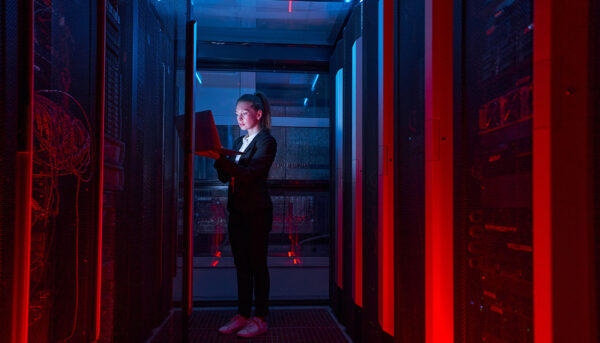Listen in your browser or subscribe via your preferred podcast platform: Listen on Spotify | Listen on Apple Podcasts
Transcript:
Hello and welcome to Morning Commute with Miller Thomson. You’re listening to Episode 7 and our topic today is Same Workforce, Different Workplaces – Key Considerations for Adapting to Remote Work Realities.
John:
My name is John Batzel. I’m a partner with Miller Thomson in the Calgary office and my co presenter today is Veronica Rossos and she’s a partner in our Vancouver office. So just to get things started I’ll ask you, Veronica, what issues generally do you think are likely to arise with this new post-COVID hybrid workplace that we find ourselves in arising obviously from COVID and all that came with it?
Veronica:
Hi John. It’s a good question. One of the issues obviously that workplaces are going to be confronted with is … arises actually in the context of health and safety. As we all know and across Canada there was a great bargain made many years ago where employees gave up the right to sue employers for injuries occasioned on the workplace or in the workplace or as a consequence of work-related duties and that exchange was done so that there is a no-fault scheme in place. Most provinces refer to it as workplace health and safety or something similar to that.
And one of the issues that we have with the new hybrid workplace or the post-COVID workplace is how do we address the expanded workplace and to what extent does the workplace extend into an employee’s home and how to manage that if they are working from home. So there are a few questions that an employer has an obligation to ask and a few issues that an employee has an obligation to respond to in an active way in order to ensure that health and safety is managed appropriately and that employee injuries are minimized in the context of working from home and working from the office.
So one of the best ways of managing that is to have a policy in place which addresses issues related to the hybrid workplace and in particular it should be a policy that manages issues related to time spent at or in the work environment and time spent away from the work environment. Coverage for workplace-related injuries that occur in the workplace or in the home workplace will arise on the same conditions and under the same conditions as coverage would arise in a normal workplace so the person has to be operating or functioning in a way that is related to their work and they have to be at the workplace. So an example would be, if there is a cord … computer cord, for example, and the employee gets up to use the washroom and trips over that cord, that would likely be classified as a workplace-related injury. If however the employee is taking a break from work and is vacuuming in and around his or her work environment or work from home environment and trips over that vacuum cord it’s unlikely that that would be a workplace injury. So having a clear understanding and appreciation of where the workplace extends to and how the workplace extends. And as I said that’s something that can really be managed with policies, making it clear that you’re expected to be at your workplace from these hours and making it clear that breaks are times away from work and making it clear that the workplace is meant to be kept in a manner that is similar to the workplace in the office and making things like ergonomics available to your employees who are working from home. So that’s one of the issues that I foresee arising and being somewhat problematic … one that may be remedied with the appropriate policy and the introduction of the appropriate policy and appropriate amounts of communication.
And on that same note do you have any thoughts about how employers can manage their employees and in particular their performance when they’re not in the workplace to be observed?
John:
Yes, absolutely. I think it’s obviously a topic that a lot of employers are considering right now Veronica. And really I think there’s three things that we want to consider with respect to performance management for remote work employees. The first is you need to train your remote workforce to work remotely. Secondly, you need to consider monitoring performance of remote work employees and in some cases of course imposing discipline the same way you would need to consider that with people working physically in the office or at the physical workplace, and lastly, you need to measure performance and obviously consider rewarding strong performance.
In terms of training your remote work employees I think the most important thing, you mentioned a policy before, I think a policy really is the most important consideration with respect to training your remote workforce. There are a number of things you want to include in a policy I think. I won’t obviously touch on everything but a couple of highlights I would say, first, remote work employees should be required to establish, as you pointed out, a safe workspace in their home. It needs to be free from safety hazards and free from harm to any company property or information.
Your work from home policy should say that remote work employees are required to use any company property that they’re provided with reasonable care and that they’re only to use it for business purposes. Remote work employees must take reasonable steps to protect any confidential business information that’s provided to them or that they have access to. Remote work employees should be reminded that all company policies continue to apply to them even though they are working from their home.
The work from home policy should say that remote work employees must devote their full time and attention to their job duties during normal work hours. They must ensure that they maintain regular communication and are generally available.
And the last key point I think from the policy perspective is, I think every work from home policy should state that employees are required to record all of their time actually worked and they need to obtain prior approval from their supervisor for any overtime and then submit that overtime immediately to their supervisor. Obviously overtime can be challenging when employees are physically present at work but the potential for misuse, abuse if you will, increases when employees are not physically at work. In addition to having a policy, you also want to ensure that remote work employees have necessary training. Obviously they’re going to need support. They’re going need a really good helpdesk.
And also I think you want to consider other sorts of supports for remote work. Employees working remotely from home, we’re all familiar now after over a year of this, can create special issues with respect to anxiety, depression, these sorts of things. So you want to make sure that employees have the necessary supports and that they’re aware of them.
A couple other things, I would just say quickly, with respect to monitoring employee performance and where necessary imposing discipline, obviously employers struggle with this, especially the discipline part even when employees are physically at work, can create special challenges when they’re working remotely, you don’t have the same ability to observe them. My view, the best way to address this is really rely on your managers. They’re in the best position to evaluate how available and responsive someone is, how productive they are, are they continuing to produce good work, are they following company policies, etc. In some cases employers might feel that they need to go beyond that and even consider some sort of monitoring software or something like that. I’m not going to get into that here except to say that that raises privacy issues that you’re going to want to consider. And finally, I would say this Veronica, with respect to measuring performance and rewarding strong performance, again, this is something that can be more challenging when people are not physically present to be observed in the same way they traditionally would have been. My view here once again, you want to lean on your managers and your supervisors. Again they’re in the best position to determine is somebody available, are they responsive, are they being productive, do they have a good attitude, are they following company policies, delivering a good work product. I think the biggest issue with respect to rewarding performance – monitoring and rewarding performance – is just to really ensure that the people who are working from home understand that they are going to be … how they’re going to be evaluated and that they’re going to be compensated for strong performance in the same way as anybody who physically goes to work and so I think that would be key.
A question for you, sort of arising I guess from that last aspect of wanting to make sure that employees working from home remain engaged and know that they’re going to still be rewarded for strong performance and monitored, how do you think Veronica, you know morale and connections can be maintained with this workforce who are obviously more detached in some respects … certain physically, than they normally would have been in the past … what do you recommend in order to address those sorts of issues?
Veronica:
That’s such a good question John and obviously I think we’re all trying to plan for this new hybrid workplace which we all hope to introduce sooner rather than later as opposed to the one that was foisted on us when the pandemic reared its head last spring, about a year ago, and I think what we’ve all noticed is … one piece is the work spread so many of us are working hours that are far greater than we were doing pre-pandemic and also we’ve lost the connection to our colleagues, especially those of us in provinces like Alberta and Ontario and Quebec that have really experienced shutdowns of a pretty severe and significant nature, keeping people out of the workplace for longer periods of time and my view on this is that the best way to maintain that connection and the culture that leads to retention of employees is communication and by communication it’s not necessarily communication through policies and procedures which are so important in terms of setting out the metrics for working from home but rather incorporating into your business model the types of communications that would have been done when people are working in-house but providing those communications and those opportunities in an online forum or in an online way.
It can be difficult because obviously that personal connection is lost and many people are less comfortable asking questions in a group when it’s a group of small images, there’s small squares on a screen as opposed to a group where one can put up one’s hand and isn’t worried about who’s going to speak next.
However, I think we’ve all become somewhat accustomed to this new model over the course of the last year and most workplaces are not going to go to a full work from home model. I think most workplaces are looking at something along the hybrid, and so encouraging individuals to come into work or to come into the physical workplace when there are events, when there are learning opportunities, when there are collaboration opportunities, when there are those types of events and instances where the culture and ethos of the organization really come to the fore can be a great benefit and ensuring that employees know that they are not being kept out of the workplace, that a new model isn’t being foisted on them, but rather that the employer appreciates that there may now be a new reality that these employees want to try to pursue and so giving employees an option I think is very important and letting them know that they are in the driver’s seat when it comes to what the new normal will look like to the extent that the employer is able to provide them with that type of control.
For example, I know that most of our offices here at Miller Thomson are looking at what our employees want to do and will try to accommodate those but we will also likely want people to come into the office on a semi-regular basis, for those employees who choose to work from home primarily, and in order to maintain that type of connection and that kind of face-to-face relationship that can’t really be fostered over any of our digital media. I think we all, at the outset of the work from home phase of the pandemic, were very impressed by the connectivity that we were able to maintain and the fact that we were able to go to court or have meetings or able to communicate with one another so easily over these various digital means but at the same time I think that now we’re a year in we’ve also come to recognize the flaws with the digital option which is that there is a benefit to face time, there is a benefit to seeing someone live and in person.
Furthermore, I think that we all feel somewhat bereft of personal connections and so I anticipate that we’ll see a bit more people time when we all start coming back into the office. But I do think that, you know, communication, connection, continuity and community are going to be the key points that employers want to ensure that they are offering to their people because there’s very little difference from one employer to the next other than that community that’s fostered by organizations and that organizational integrity and personality that comes from the people with whom you work so fostering that and ensuring that it’s not simply a matter of policies and procedures and rules to follow but also giving people an opportunity to remind themselves why it is that they came to work with the organization in the first place, and in so doing making those opportunities available and remembering that mental health has been an issue for the last year and ensuring that people know that they have opportunities to come in to workplaces or to reach out to their colleagues and speak candidly and openly in involving them in their decision-making as we progress out of the pandemic and into our new hybrid style of work I think will be very important in order to retain talent and to ensure that talent feels appreciated and recognized.
And you know you mentioned something that caught my attention earlier which was the monitoring and tracking of employees and the possibility of including software for tracking on devices and that made me think about the work from home environment and obviously in our work, in our line of work, we are surrounded by confidential information so how do we ensure that when we are working from home or when our employees are working from home or when generally employees are working from home for any employer, how do we ensure that confidential information is being protected and that the confidentiality of business information is being preserved and protected in the manner that clients, customers and organizations demand from their people. Do you have any thoughts on that John?
John:
Yeah for sure, I mean it’s a great question and the challenge is pretty obvious. In your physical workspace usually there are protections that exist for company property and confidential information either of the company or the company’s clients. I mean simple things like locked doors, there’s building security typically, there may be surveillance … usually in this day and age there are measures to prevent cyber attacks and these sorts of things.
In an employee’s home, you know, many of these protections obviously are either going to be absent or at least reduced or, most likely, you simply don’t have any real good idea in each particular case with each specific employee what the situation is. In addition of course there could be other occupants of the employee’s home, there can be guests from time to time who have access, maybe unsupervised access, to your confidential business information and you may never even know about that so the challenge is pretty obvious. What you do about it?
Well in these circumstances, you know, I think it’s especially important to reiterate to your remote work employees that existing confidential information policies that you already have in place apply to them when they’re working remotely. In fact they apply especially to employees when they are working remotely and I think you want to review those policies to make sure that they’re up to the test of the remote work environment. A couple of suggestions in particular are topics that you want to make sure that your policy is addressing, with respect to remote work employees, you want to make sure that there’s a requirement to use a computer password. Virtually everyone would have that these days but it’s important that access to the computer be restricted to whoever has the password. You want to have procedures in place for locking your computer when you step away just for a moment or maybe you’re leaving the home to go to the grocery store, something like that, and you want to have a pretty clear policy in place that doesn’t leave the computer unattended and available for anybody to access the information on it. You want to have a requirement to lock filing cabinets or desk drawers. In fact you may need to even just consider does somebody have a filing cabinet at home or something that they could lock … a place where they could store confidential business information that they have in hard copy or are they just stuffing it under the mattress? I mean most of the time you don’t really know and you want to think about this in your policies as to what the requirement is and make sure that you’re taking reasonable steps as the employer to facilitate the right outcome. You want to take appropriate steps … or find out what the situation is in terms of, you know, the individual’s home security and really you want to have a clear statement about, as I said earlier, the use of a company property and business information.
I think really the last thing I’d recommend, Veronica, that employers consider for their remote workforce is a site visit at some point and obviously that needs to take into consideration public health regulations and it would only be with the consent of the employee but really what you want to do is you want to ensure issues like the workspace that they’ve created, is it safe? That there are, you know, appropriate measures in place to protect your equipment and your confidential information and you want to make sure that, you know, that the necessary supports for somebody to work from home that you should be providing whatever that might be … internet access, a printer, who knows, it could be any … you know a scanner … it might be lots of different things, that those are available or you understand what the situation is there and you’re doing what you can to ensure that people can do their job effectively from home.
Veronica:
A site visit is such a great idea and I think it sort of ticks all of the boxes with respect to the things that we’ve been talking about today John. I think a site visit demonstrates that the employer is connected to their employee and wants to make certain that their environment is appropriate. It demonstrates that there is that ongoing connection and that it isn’t simply a matter of outsourcing someone to build the widgets and make the product. And I think it also obviously addresses issues of confidentiality and can ensure that the person is working when they’re meant to be working so I think it does address each of the four questions that we’ve sort of posed one another today and I think that’s a really great idea … along with providing an employee a chance to ask questions one-to-one or face-to-face as opposed to putting them on the spot when they’re confronted with that screen full of tiny boxes of faces.
John:
Totally agree. It’s a challenging new world and employers have had roughly a year now to try to work their way through it and as we look forward, you know, this new hybrid work model, for a lot of employers anyways, is likely to become the norm.
Veronica:
Well John, it’s been an absolute pleasure speaking with you again today and I look forward to the next time and with that it’s been a pleasure speaking with all of you and we hope you join us next time for Episode 8.
John:
Thanks very much.




